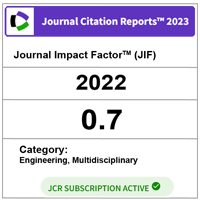The Effect of Mobile Applications on English Vocabulary Acquisition
DOI:
https://doi.org/10.11113/jt.v68.2912Keywords:
Mobile technologies, e-learning, mobile learning, mobile applications, english language learningAbstract
The study reported here investigates the use and effectiveness of mobile applications in English vocabulary learning. Vocabulary acquisition is an important part of language learning. The advancement in technology has greatly improved the existing setting in education world in recent years. The wide use of mobile wireless technologies also has created more opportunities to shift the traditional academic environment to mobile learning. Interactive multimedia is a great avenue for the communication and education. This research studies intermediate-level English learners’ performance before and after using mobile applications that were introduced to the study group as an intervention. It examines whether multimedia courseware affects the vocabulary learning in the second language acquisition. The quantitative data revealed positive change in learners’ performance and the questionnaire analysis indicated that using the applications helped enhance learning of vocabulary, confidence, class participation and that, students had a positive tendency toward the use of multimedia in education.
References
Al-Seghayer, K. 2005. The Effect of Multimedia Annotation Modes on L2 Vocabulary Acquisition. Research in Technology and Second Language Education: Developments and Directions. 3: 133.
AlKahtani, S. 1999. Teaching ESL Reading Using Computers. The Internet TESL Journal. 5(11).
Baker, S. K., Simmons, D. C., and Kameenui, E. J. 1995. Vocabulary Acquisition: Synthesis of the Research: National Center to Improve the Tools of Educators, College of Education, University of Oregon.
CSATA, T. 2004. Evaluating Non-Functional Requirements in Mobile Learning Contents and Multimedia Educational Software. Learning with Mobile Devices. 13.
Carrell, P. L. and Eisterhold, J. C. 1983. Schema Theory and ESL Reading Pedagogy. TESOL Quarterly. 17(4): 553–573.
Chanier, T., and Selva, T. 1998. The ALEXIA System: The Use of Visual Representations to Enhance Vocabulary Learning. Computer Assisted Language Learning. 11(5): 489–521.
Chun, D. M. and Plass, J. L. 1996. Effects of Multimedia Annotations on Vocabulary Acquisition. The Modern Language Journal. 80(2): 183–198.
Devellis, R. 1991. Scale Development: Theory and Appliactions. Newbury Park. CA: Sage.
Dickinson, D. K. and Neuman, S. B. 2007. Handbook of Early Literacy Research. Vol. 2. Guilford Press.
Groot, P. J. 2000. Computer Assisted Second Language Vocabulary Acquisition. Language Learning & Technology. 4(1): 60–81.
Hong, X. 2010. Review of Effects of Glosses on Incidental Vocabulary Learning and Reading Comprehension. Chinese Journal of Applied Linguistics. 33 (1): 56–73.
Johnson, L., Smith, R., Willis, H., Levine, A., and Haywood, K. 2005. The 2011 Horizon Report. The New Media Consortium, Austin, Texas.
Kenning, M. J. and Kenning, M. M. 1984. Introduction To Computer Assisted Language Teaching. Oxford University Press.
Kukulska-Hulme, A. 2007. Mobile Usability in Educational Contexts: What Have We Learnt? The International Review of Research in Open and Distance Learning. 8(2).
Liu, D. 2004. EFL Proficiency, Gender And Language Learning Strategy Use Among A Group of Chinese Technological Institute English Majors. ARECLS e-Journal. 1.
Magno, C. 2010. Korean Students' Language Learning Strategies and Years of Studying English as Predictors of Proficiency in English. TESOL Journal. 2: 39–61.
Magogwe, J. M., and Oliver, R. 2007. The Relationship Between Language Learning Strategies, Proficiency, Age And Self-Efficacy Beliefs: A Study Of Language Learners In Botswana. System. 35(3): 338–352.
Mayer, R. E. 1997. Multimedia Learning: Are We Asking The Right Questions? Educational Psychologist. 32(1): 1–19.
Mayer, R. E. 2002. Multimedia Learning. Psychology of Learning and Motivation. 41: 85–139.
Mayer, R. E., and Anderson, R. B. 1992. The Instructive Animation: Helping Students Build Connections Between Words and Pictures in Multimedia Learning. Journal of Educational Psychology. 84(4): 444.
Meschyan, G., and Hernandez., A. 2002. Is Native-Language Decoding Skill Related To Second-Language Learning? Journal of Educational Psychology. 94(1): 14.
Moeller, A. K., Corl, K. A., Ricaurte, R., and Abrate, J. 1998. Celebrating Diversity in the Language Classroom. Selected Papers from the 1998 Central States Conference, N(National Textbook Company).
O'Malley, J., and McCraw, H. 1999. Students Perceptions of Distance Learning, Online Learning and the Traditional Classroom. Online Journal Of Distance Learning Administration. 2(4).
Richards, J. C. 1976. The Role of Vocabulary Teaching. TESOL Quarterly. 77–89.
Singhal, M. 1998. A Comparison of L1 and L2 Reading: Cultural Differences and Schema. The Internet TESL Journal. 4(10).
Downloads
Published
Issue
Section
License
Copyright of articles that appear in Jurnal Teknologi belongs exclusively to Penerbit Universiti Teknologi Malaysia (Penerbit UTM Press). This copyright covers the rights to reproduce the article, including reprints, electronic reproductions, or any other reproductions of similar nature.





